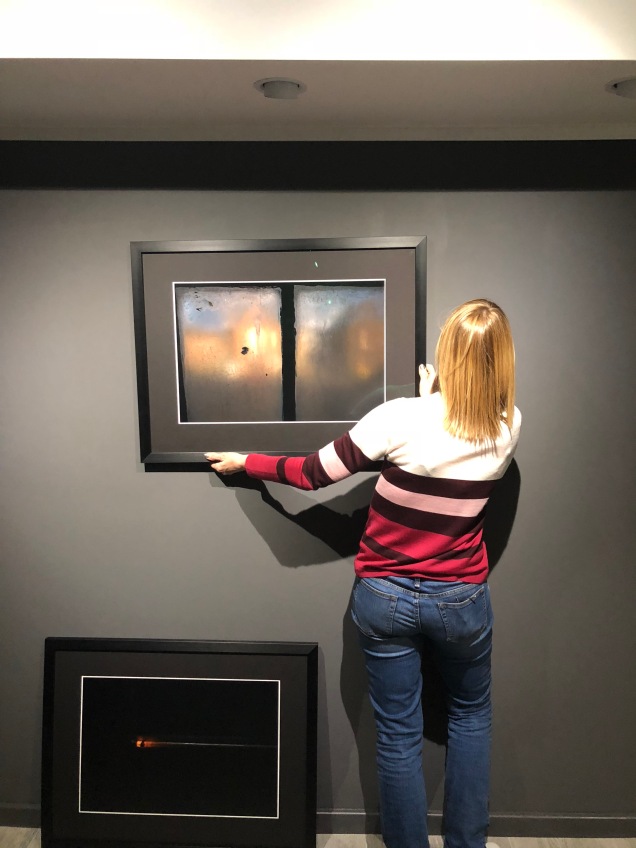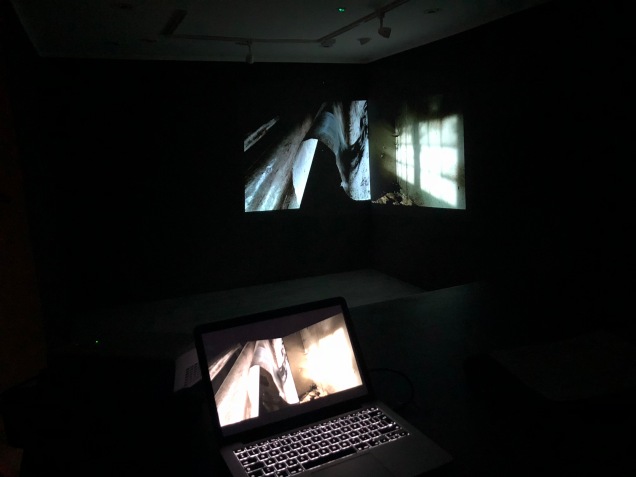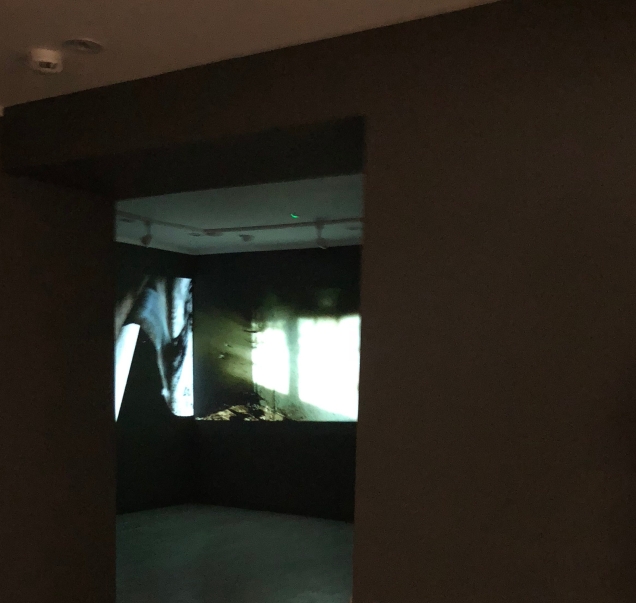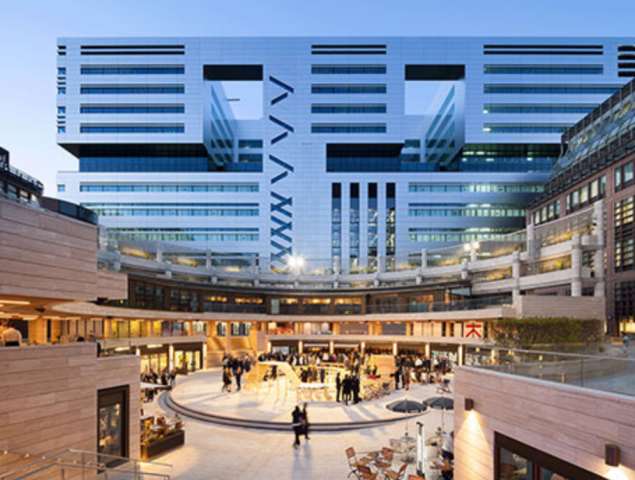Installation Development : Final Major Project
MA in Photography, Falmouth University, Module 5
Figures 1, 2
Following the success of my image transfer technique I packed my bags to have a meeting at Argentea Gallery with Jennie Anderson the owner. I was armed with A2 prints, my concrete tablet, laptop with Madmapper loaded and a digital projector.
Medium One : Concrete
The first discussion was about the concrete tablet as a form. The sample pair of images have an excess of film which we agreed under certain light is too obvious; however, my planned trials would trim potentially all excess film, leaving only the print and a margin of concrete.
We looked at how the sample tablet appeared under the pool of lighting, figures 1 and 2. We had a long discussion about whether a ‘free-standing’ piece to support the planned series of tablets would work in the centre of the space. We agreed to look at Ikea ‘postcard’ shelving on supports, plinths and wall mounts. The latter is problematic as the walls cannot be significantly drilled into as they are tanked as it is a basement. We agreed that the track lighting can be adjusted to create a pool of light in the middle of the space as a viable option.
We chose perhaps slightly prematurely, to discuss the value of the tablets, highlighting the uncertainty as to whether each piece is unique, as it is handmade concrete with a hand-mounted decal print, but, conversely, as the print is perfected each piece, assuming the same print file, would look very similar. I have four sizes to contend with too. Add to this the lack of being an ‘established artist’ and the work being effectively a student project, it may devalue the work or at least not elevate it. The other factor in the midst of this discussion is the wish on the gallerist’s and my own part to have a commercial angle. We concluded that the age-old maxim applies, price too high and risk selling none or very few; price too low and one’s work may never be regarded as valuable in the future. It is a topic I shall return to, also when I have done the maths on the gallery’s commission basis.
Figures 3, 4
Medium Two : Prints
The valuation of prints is a more established methodology and my editions of three each (regardless of size) have achieved sales in the last year between £300-600, framed. We agreed that I would list out my limited edition frames print values.
I have a set of 6 prints (c-type on Kodak Endura paper) dry mounted, masked and framed with museum glass at A2 size, plus the mask/frame combination. I took two of these to my meeting as a sample of this set. Despite thinking and visualising dimensionally, I have yet to model the various medium onto the Sketchup drawing. Hence, I was slightly surprised at how little wall space one A2 print consumed, fig 3. We did usefully rehearse how the left-hand wall (on entry) could take 5 hung prints then the primary one from the set would be on an adjacent wall, fig 4 as the focal point upon entry into the space from the spiral stair in one corner. It is likely to be the Roundhouse image shown here as it acts intriguingly at macro and micro viewing distances. I was pleased with this decision.
The black frames and masks work very well on the mid-tone grey gallery walls.
We briefly talked about one or possibly two images I intend printing, unframed, that would provide the viewer with the opportunity to ‘extend’ the feeling of depth in the space. These will be 2m high paper prints.

Figure 5

Figure 6
Medium Three : Projection
The final test was centred on demonstrating the principles of Mapmapper software. I had preloaded two of my images – from the recent Great Hampton Street shoot, that Jennie had not seen; both showing light through and onto surfaces, thus I felt most appropriate for projection. We mounted both the laptop and projector in one corner of the space, fig 6, and projected onto the walls in the opposite corner, fig 7. I was able to demonstrate that the images could be manipulated on the screen to appear in the correct ratio as shot and meeting at the corner line of the walls. This went down well.
We discussed which corner should be projected from, as I was concerned that the source beam, and thus glare of the projector, should not be the first thing you see as you enter the space. The walls are a mid-tone grey, but the brightness of the projector overcame what I was thinking may cause a dulling colour cast to the images. I was achieving the transformative strategy I envisaged.
The lights can be turned off in this space and it is suitably dark, thus maximising the impact of projected images. Fig 8 shows the views into the projection space from the principal space.
Jennie was concerned about security and locating the laptop/projector driver in a safe place.

Figure 7

Figure 8
Conclusion
Overall I was pleased with this preliminary test of the three main media techniques. We discussed the potential for a short edition, hand-crafted zine and Jennie suggested that each cover be unique, thus emphasising the specialness of such an object. She confirmed that she can execute card transactions on site.
Action Plan
I need to achieve the following;
1 To refine the concrete decal process to minimise film and work with the other, larger sized tablets.
2 To design a display solution from the options available for tablet display
3 A final edit of the prints from the set of six, and agree with the gallery.
4 Attach the hanging system to the rear of each frame.
5 To undertake further Madmapper tutorials and edit a stream of images
6 Develop the zine design for discussion at next gallery meeting
7 Consider laptop security during the show.
8 Find a source for printing 2m high paper prints.

 Figures 1, 2
Figures 1, 2 Figure 3
Figure 3







 Figure 1, Broadgate
Figure 1, Broadgate